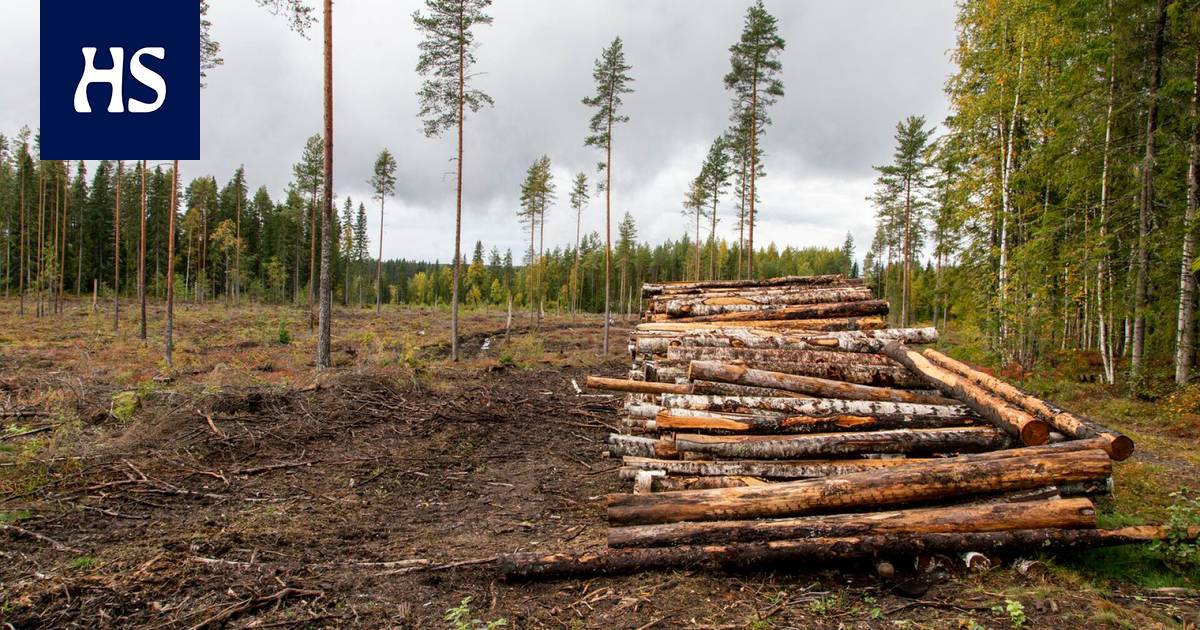Subsidies paid to private forest owners mainly contribute to increasing wood production, and only 1–2 percent goes to the management of forest nature. According to researchers, the support system must be renewed if Finland wants to be carbon neutral in 2035.
3.12. 17:51
Finland wants to be carbon neutral in 2035. The goal has relied heavily on the carbon-binding sink of forests, but it has collapsed. Forests no longer bind as much more carbon as previously calculated.
Changes are needed to forestry practices and the incentives that guide them, because, according to the researchers, carbon neutrality will not succeed without reforms.
According to a recent report by the Natural Resources Center (Luke), the support systems for both forestry and agriculture must be reformed so that the climate goals are included in the guidance with a greater weight than at present. Incentives are needed both to reduce greenhouse gas emissions and to increase carbon stocks.
The current support system for forestry does not guide or encourage forest owners in a sufficiently versatile way to take climate action and too much nature management, as it mainly promotes increasing wood production.
“Over the past ten years, only 1-2 percent of direct forestry subsidies have been directed to nature management, i.e. to the management of the most valuable forest sites located in private forests,” says the specialist researcher Esa-Jussi Viitala Read on.
The proposal for a new forestry incentive system, Metka, is currently under consideration by the parliament.
According to Viitala, even in the new system, the forest owner would not benefit financially from the management of forest nature in any way, even though, for example, the management of valuable habitats produces benefits for society, for example by preventing nature loss.
“It is no longer enough to increase wood production and focus only on that in support policy. Incentives are needed to produce non-market climate and environmental benefits,” says Viitala.
Current the support system is specifically support for wood production. Most of it goes to the maintenance of nurseries and young forest.
In recent years, according to Luke’s report, approximately 80 percent of the state’s direct subsidies to forestry have been directed to increasing wood production and indirectly promoting felling, for example building forest roads.
In addition, a large part of the actions implemented with state funding have been market-based and privately profitable even without public support. However, according to EU state aid rules, subsidies should not be directed to market-based activities.
Although environmental and nature management subsidies are included in the 25-year-old system, their importance has remained minor. However, Finland has justified forestry subsidies to the EU mainly on the basis of their ecological and environmental benefits.
For example, the restoration of bog forests, which is questionable from the point of view of climate and waterways, has been justified by improving the disturbance tolerance and environmental value of forest ecosystems, even though as a result of the restoration projects, bog forests can turn from carbon sinks into a strong source of emissions, and harmful emissions into waterways can also increase.
I’m reading according to the report, the current and also the planned support system, especially the support for nursery and young forest care, favors the forestry method based on clear cutting.
Incentives would be needed for the transition from open felling to continuous cover cultivation, especially in nutrient-rich peatlands.
“The climate challenges are specifically the biggest in peatlands, because the peat in the soil is a huge carbon store”, Viitala emphasizes.
“Based on current knowledge, switching to continuous cover forestry on lush peatlands would bring not only climate benefits but also water benefits.”
There are five million hectares of drained bog forests in Finland, the most in Europe.
Carbon sinks are in a decisive position in Finland’s climate policy, because reducing emissions alone does not secure the realization of the goal of carbon neutrality.
Read more: Coal sinks collapsed – Now is the time to discuss limiting logging
In his report, Luke lists three ways to increase carbon sinks. The fastest is to reduce logging.
“There aren’t many ways to increase the carbon sinks of forests in the short and medium term,” Viitala states.
By growing the overgrown tree stand to be more robust than the current one and by delaying the thinning of the tree stand in suitable locations, we can at the same time help the sawmill industry and the increase of long-term wood products.
The less trees are harvested from forests, the faster carbon dioxide is released back into the atmosphere. In Finland, almost 60 percent of wood is used for energy, and the proportion has increased in the 21st century.
Carbon sinks and storages can also be grown and preserved through the natural management of Finnish forests. On the other hand, increasing the number of deciduous trees would be important both in terms of curbing climate change and biodiversity.
Forest nature and the role of restoration has, however, so far been minor in private forests, which account for 60 percent of Finland’s forest land area and up to 70 percent in southern Finland.
The new support system is not bringing improvement to the matter.
“Nature management and restoration would be supported annually on a few hundred hectares in private forests, which is still very little, even though according to research they are absolutely essential in terms of both climate and biodiversity,” says Viitala.
According to Viitala, the system could be developed to be more versatile by introducing new types of performance-based subsidies and incentives.
“The system could be drawn up so that subsidies are not tied exclusively to the landowner’s loss of income, but also to the environmental benefit produced. Being results-based would give the opportunity to focus actions where they are most cost-effective,” says Viitala.
However, this is politically difficult, Viitala thinks:
“With that, producing environmental benefits would become a real option for landowners alongside or instead of wood production. However, we will go in this direction one way or another, and Finland should also prepare for it.”
#Environment #Subsidies #encourage #forest #owners #climate #action #Luke #suggests #big









